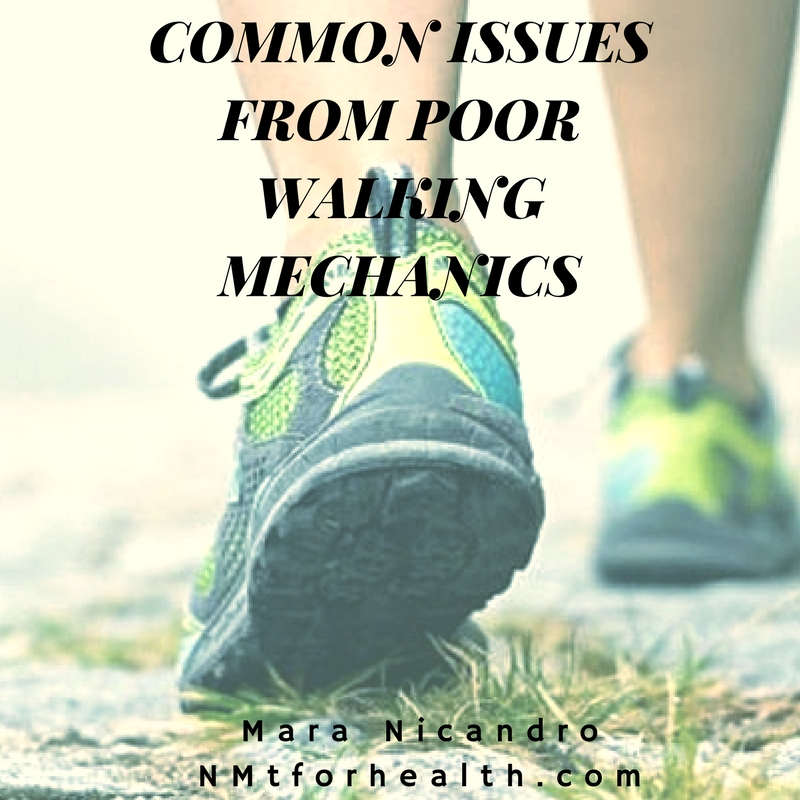Are you using good walking mechanics? Summer is here and if you live in a great city for walking, it may be time to consider if you are. Knowing may help you stay proactive instead of reactive to chronic pain. It can be a fit bit challenge, hiking, or just for leisure this low-impact exercise with improper posture can lead to muscle imbalances and strain.
COMMON ISSUES FROM POOR WALKING MECHANICS:
- Bunions
- Plantar fasciitis – not working through the sole of your foot can create this painful ailment
- Knee issues
- Hip issues
- Low-back issues
My practice will see an uptake in walkers unaware these issues can stem from everyday foot mechanics and walking gait.
WHAT IT LOOKS LIKE WHEN YOUR USING THE PROPER WALKING MECHANICS:
- Your head should be straight, with your gaze about 15 to 20 feet in front of you. (You should’nt feel tension in your shoulders)
- Your torso should be actively working for you (abs/pelvic floor on with out you forcing it) if they are this will allow you to have good posture during the walk.
- A smooth, non-jerky arm swing can be achieved by gently swinging your bent arms in a natural motion. (careful with hand position the shouldn’t face the back this position can cause shoulder issues)
- Lastly, are the feet cooperating? Especially if you’ve had ankle sprains in the past it’s good to know if you have a active foot. To prevent chronic pain from developing. First thing in the morning your routine should include rolling the ankle and massage to the bottom of the foot to loosen any stiffness.
FOOT POSITIONING
Having an active foot makes a world of difference. In foot assessment the toe will always be inactive. It could be the hips, hamstring or the muscles of the calf not working together to allow full plantar flexion of the foot this can prevent the toe from functioning properly.
Proper foot positioning during walking helps to create a smooth even motion that minimizes foot, knee, and back pain. Let your heel hit the ground first then gently roll toward the front of your toe.
Try to hit your heel on the ground as gently as possible. Are your shoes made for walking? Your shoes must be supportive, with a sole thick enough to absorb shock, yet flexible enough to move through the rolling foot motion. If you are making a lot of noise as you walk, this can indicate you are not practicing proper mechanics.
Proper mechanics when walking will also ensure you are getting the greatest benefits from walking. While proper walking may take practice to perfect, you can reap the benefits of less back pain and discomfort.
Then you can enjoy your walks through the city!
References:
Proper walking technique by Mayo Clinic.com

